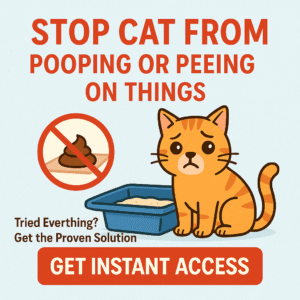Struggling to keep your cat’s opened wet food fresh and tasty? You’re not alone. Proper storage is essential to preserve food quality, prevent spoilage, and safeguard your feline’s health. In this comprehensive guide, you’ll learn best practices for storing wet food, common mistakes to avoid, and how the Cat Spray No More ebook extends your care beyond mealtime with routines that support freshness, hygiene, and confidence in your daily life.
Introduction
Wet cat food is highly perishable once opened. Left exposed, it can lose moisture, spoil quickly, and attract bacteria—and no cat deserves stale or unsafe meals. In this article, you’ll discover:
- The ideal storage methods for different packaging types.
- Tips on maximizing freshness and maintaining quality.
- Step-by-step instructions to avoid common pitfalls.
- How Cat Spray No More supports overall home hygiene, food safety, and feline wellness.
Why Proper Storage Matters
Improperly stored wet food can spoil fast. Once sealed, oxidation begins. Bacterial growth, fats going rancid, and nutrient loss all accelerate when food is exposed. That’s risky for your cat—leading to upset stomachs, poor nutrition, or more serious health problems.
Consistent, clean storage also keeps your feeding area fresher. No spills, no lingering odors—and that matters for all-day peace of mind. The Cat Spray No More guide reinforces storage habits with routines that support both food quality and environmental freshness.
How Long Is Opened Wet Food Good For?
| Storage Method | Ideal Within | Max Safe Time |
|---|---|---|
| Refrigerated in can/tub with cover | 24 hours | 48 hours |
| Refrigerated in sealed container | 24–36 hours | 48 hours |
| Room temperature in open dish | Up to 2 hours | Not recommended |
If your cat eats slowly, transfer the food to a container and refrigerate. And when in doubt—toss it.
Best Storage Methods
1. Keep It Sealed and Refrigerated
- Use plastic lids or can seals: Snug-fitting covers lock out contaminants.
- Transfer to airtight containers: Glass or BPA-free plastic are best—no odors, no flavor transfer.
- Label with date: Keep track of freshness and avoid over-keeping.
- Store centrally in refrigerator: Avoid door compartments, which have fluctuating temperatures.
2. Keep It Cool—Above Freezing
Most wet food isn’t meant to freeze after opening—ice crystals can break down texture and taste. If freezing is needed, portion the food beforehand to thaw gently.
3. Avoid Spoilage at Room Temperature
- Hot environments: Throw out food left out over 2 hours.
- Outdoor feeding: Don’t reuse leftovers. Fill bowls fresh, discard leftovers after meals.
- High humidity: Can accelerate spoilage—even in the fridge. Wipe container edges before sealing.
Signs Wet Food Has Gone Bad
- Off smell: Sour or rancid odors mean spoilage.
- Texture change: Slimy, separated, or moldy food is unsafe.
- Visual spoilage: Yellowing, black spots, fuzz—discard immediately.
- Cat refusal: Even if it looks okay, your cat’s nose knows best.
Step-by-Step Storage Guide
- After mealtime, remove uneaten food promptly.
- Clean can rim before resealing—wipe off residue.
- Choose storage: can with lid or transfer to container.
- Label with date: “Opened today” reminders prevent guesswork.
- Place in main fridge shelf at 4 °C (39 °F).
- Reheat for serving: Warming to room temperature improves palatability—never microwave.
- Discard after 48 hours at the latest.
Tip: Warming food draws out more aroma and flavor—ideal for picky eaters.
Common Mistakes to Avoid
- Refrigerator door storage: Temperature swings increase spoilage risk.
- Meal-dish was used as storage: Clean containers preserve freshness.
- No date label: Forgotten food stays too long.
- Freezing inside can: Not microwave-safe and may contaminate.
Extra Tips for Multi-Cat Homes
- Individual portions: Prevent cross-contamination—serve from separate containers.
- Hygienic feeding areas: Wipe dishes before and after each feeding—with guidance from Cat Spray No More.
- Discourage food guarding: Provide space so shy eaters aren’t tempted to overeat and leave others with leftovers.
How Cat Spray No More Supports Healthy Feeding
The guide isn’t just about spraying issues—it covers full care routines, including food hygiene. Inside you’ll find:
- Scheduled feeding checklists: Ensures freshness, proper portioning, and regular cleanups.
- Food-safe cleaning methods: Sanitize bowls, surfaces, and storage zones effectively.
- Environment routines: Keep feeding areas dry, odor-free, and organized.
- Behavioral prompts: Detect hush-hush eating or food anxiety early.
Ready for a fresher kitchen and healthier feeding routine? Download Cat Spray No More today—get complete care for food, hygiene, and peace of mind.
Real-Life Cat Owner Feedback
“Using airtight containers and labels was a game changer. The ebook added meal tracking and odor-free feeding zones. Our cat eats happily and the kitchen stays spotless!”
Conclusion
Storing opened wet cat food properly isn’t just about convenience—it’s vital for your cat’s health and your home’s hygiene. Refrigerate promptly, seal containers tightly, label dates, and discard leftovers after 48 hours. Guard against common mistakes like door storage and forgetting labels.
Want to elevate your routine even further? With Cat Spray No More, you’ll gain structured feeding plans, cleaning protocols, and behavior insights—all tailored for pet parents who care deeply. Download now and see how effortless home care can feel.
